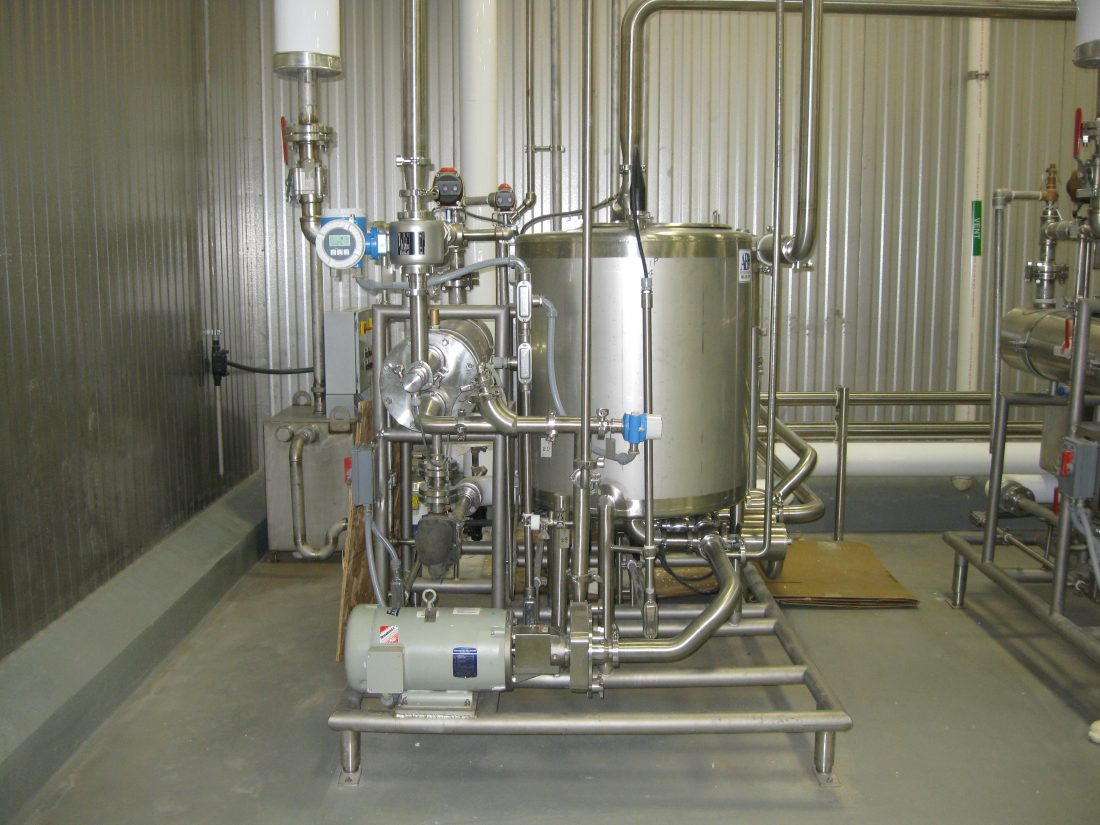Any food or beverage plant facility that uses clean-in-place (CIP) technology to clean tanks, piping or product lines without disassembly three to seven times a week should implement a reuse design, provided cross-contamination is unlikely. Here are four reasons why:
1-3. Saving money, water and disposal fees. Unlike the single-pass CIP design where water and cleaning solutions cycle through only once before disposal, the reuse design recycles them for pre-rinsing or cleaning out of place (COP) during future cleaning.
Although the reuse design has a larger footprint and higher initial costs, that shouldn’t prevent you from seeing its value. The equipment quickly pays for itself when you can save on cleaning chemicals and water consumption, plus a reduction in wastewater disposal fees.
4. Your water works harder before it goes down the drain. Recovered water can be used in a variety of applications including:
- Pre-rinse cycle of cleaning process – afterwards, the water must be disposed of due to heavy soils
- Post-rinse cycle – only if the soap from the wash cycle can be removed and the post rinse is followed by another cleaning step, such as alkaline/post rinse/acid
- Pre-rinse cycle for another product or batch – if the water isn’t too soapy, or the soap can be partially removed
- Cleaning of non-product contact surfaces – with or without additional soap, depending on the application can be used COP
When choosing a CIP system, be sure to compare the upfront equipment costs with the long-term benefits. If you would like to discuss the CIP options available during your next food and beverage facility design-build, or the reconfiguration of your existing production line, comment below!




Very useful information.
Thank you
Thanks for reading, Nelson!